[Version française sur le site de La Recherche]
This is an invited blog post by one of my crewmates, Christiane Heinicke. As a geophysicist and a rock enthusiast, she was the right person to write about our work in lava tubes.
The cave
It is dark around us and even with our headlamps we cannot see farther than an arm’s length. The air is so humid that my helmet fogs up, despite my fan blowing beside my ear with all its strength. Behind is a rubble field of lava rocks that have broken off the ceiling some time ago. In front of us we can barely make out the deep hole in the ground, behind it impenetrable blackness.
At this point the entrance to the cave is around 100 meters behind us, and 50 meters ago we passed the last skylight – where the cave ceiling has collapsed and how lets sunshine in. If I turned around and stretched a little bit, above all the giant boulders, I can see a tiny point of shimmer, where the skylight is. Too far away to be of any use to us here.
Lava tubes form when hot, flowing lava begins to cool at the surface, but is still hot and liquid on the inside. The hot lava is draining, leaving behind a cold, solidified shell. Occasionally more than one wave of lava is flowing through the tube, and they don’t have to belong to one single eruption. Their shape makes lava tubes exceptionally stable caves. After an initial collapse of a few rocks from wall and ceiling, the tube does not change much over time any more.
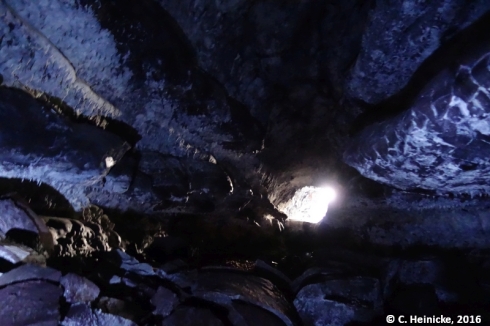
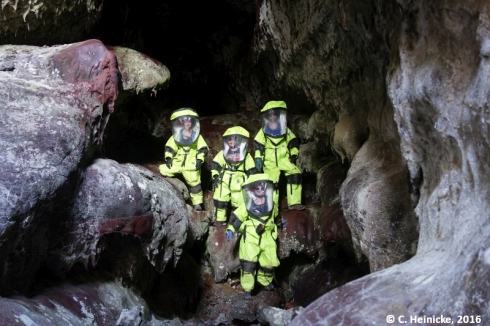
The “hole” in the ground in front of me, is not actually a hole: The ground that we had been walking on so far simply stops here. Where we had been walking, one of the lava gushes had started to solidify, in front of us, however, it had drained completely. We even heard how hollow the ground was on our way here.
I was nervous: Even though the lava inside the cave was barely weathered, we had no clue how solid the ground was we were standing on. If we happened to break through, every attempt to call back to the habitat for help was doomed because of the iron-rich rock around us. We were on our own. It was pitch black, and anyway, how far would we continue deeper into the cave until we would turn around?
We followed a narrow bench on the side, another remainder of the lava gush we had been walking on so far. We pressed ourselves into the rough wall, we crawled more than we walk. Then our bench ended.
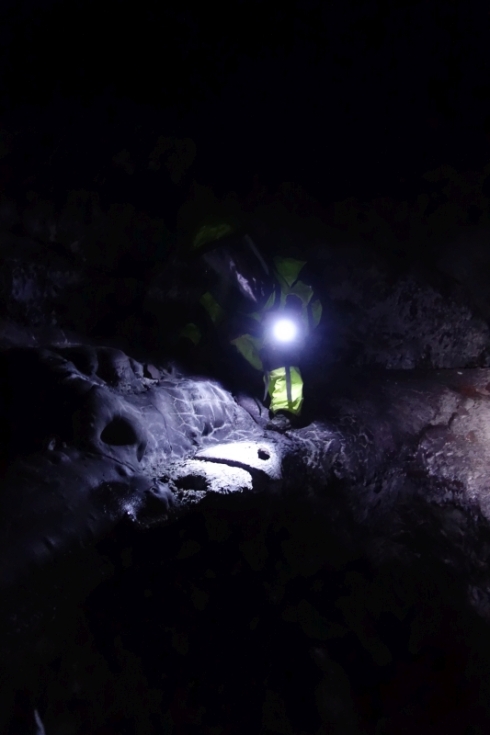
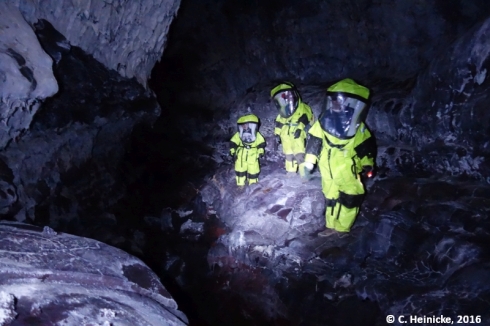
Luckily for us the bench had a few steps just before its end that were ridiculously easy to descend. Before I descended, however, I straightened up to look around – and saw a tiny, bright spot in the distance in front of us.
Relieved, I was grinning from one ear to the other. The light did not necessarily indicate the presence of an accessible exit – on the contrary, as it later turned out, the light was coming from a small skylight, whose walls were impossible to climb. However, now we were not entering deeper into the darkness, but we would soon be able to see our surroundings again and maybe the skylight could show us the way to an exit.
For now though, the light had to wait. We climbed down the bench, and two meters lower we found the most exciting rock formations of the entire cave. Chocolate brown thumbs of lava that formed while the cave wall was still warm and soft. Red lava that looked like tomato sauce and had painted some of the thumbs. Small cracks in the rocks that gave home to small, furry patches of salt.
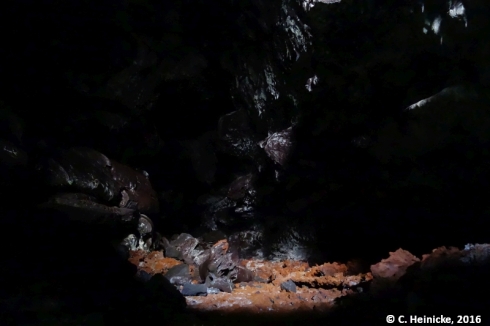
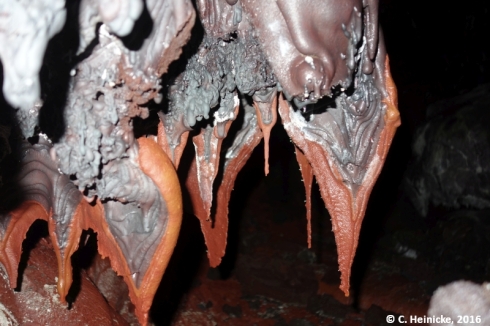
After this geological wonderland we had to rob through a pinch point. Our suits were boon and bane at the same time: They protected us from scratching our skin, but also tended to get caught on the thumbs protruding inside the pinch point. The skylight I had seen from deeper inside the cave lay behind the tight spot and at least five meters above our heads. We balanced across a field of giant boulders, at whose end we stood beneath the sun – but still two meters below the surface of the surrounding lava field. Squeezed between two cavities that belong to an extension of the cave, we found a narrow bridge from where we could climb out of the cave with only a few steps. We had found an exit!
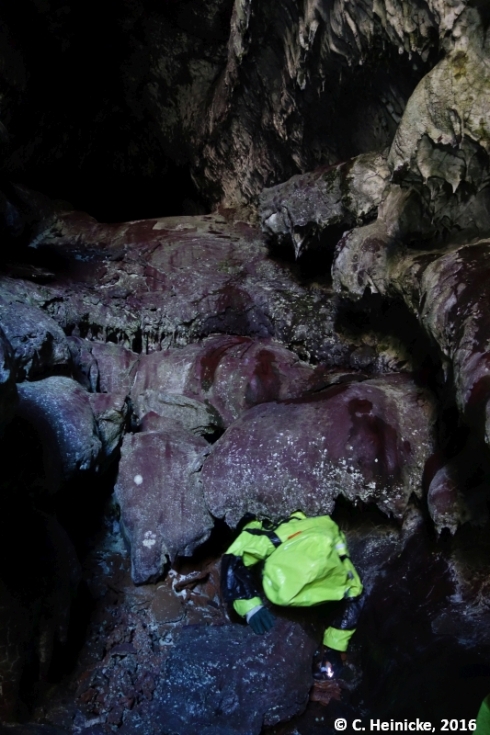
Since our first exploratory visit we have returned to the cave multiple times. We have measured the cave, examined the rock more closely, and found a suitable shelter for a possible evacuation from the hab: On Mars this kind of lava tube is hoped to provide shelter to astronauts from the harmful space radiation, either as permanent settlement or as emergency shelter during a solar storm. The Martian ground definitely contains many promising skylights, they have just been inaccessible to today’s rovers.
But not only human life can find shelter in Martian lava tubes: Lava tubes are among the places where an astrobiologist would search first for life on Mars.
In any case, compared the barren surface landscape around us, our lava tube is full of life. There are mosses growing on rocks only a few meters from skylights and protected from sun and wind by the cave ceiling. And directly beneath the skylight that motivated me to continue we even found a healthy, happy fern.
Christiane Heinicke
To know more about Christiane, see this post. You can also check Christiane’s blog (in German).


Great read and great photos. You should expand on this story and do a blog about your explorations in the tubes – and post more photos! 🙂
Good luck!
MikeG
LikeLike
Hi Mike, glad you liked our little cave adventure.
There are (a few) more photos in this post: http://www.scilogs.de/leben-auf-dem-mars/eva-0815/
Given that it is from back in February, I guess I could write about another cave adventure, it’s just so hard to choose which 😉
Also, Carmel and I are currently working on a sub-website (in English) about all the skylights and lava tubes we’ve found. I can post a link here when it’s ready.
LikeLike